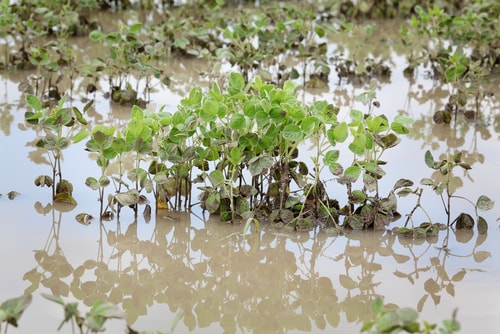Fourth state in a 12-state tour
By Diego Flammini, Farms.com
Farms.com Risk Management’s Chief Commodity Strategist Moe Agostino and his team are continuing to make their way through the United States on the 2015 US Corn Belt Crop Tour. The fourth state visited on the 12-state tour was Missouri.
Like Ohio, Indiana and Illinois, Missouri seems to be battling high levels of moisture, which appears to be affecting the soybean crops the most.

“Missouri is one of the states that was hit with a lot of moisture as well,” Agostino said. “The beans here, from what I see look late. They’re just barely getting out of the ground (and) going to probably put a drag on the national yield.”
Agostino said some reports estimate that out of the 5.7 million acres of beans expected to be planted, as much as 30% may not even make it into the ground.
“About May 4th is when it started raining and there’s only been one or two full weekends without rain,” said Kurtis Gregory, a farmer from Marshall, Missouri. “I have about 70 acres of beans left to plant. I’m keeping my fingers crossed that I can get it done tomorrow if it dries out enough.”
“We’re still about 100 acres (of beans) shy of being done and that’s 100 acres we may not even get in the ground,” said JC Hester, also from Marshall. “It’s just been a real struggle.”
Some farmers in Missouri are so surprised by the weather that if the conditions become a trend, they might consider other options.
“If I had to farm like this every year I’m afraid I have to quit,” said Chuck Weldon from Davies County.
Weldon said he’s going to try and get his beans planted because “they’re worth more to me in the ground than in the bag.”
Join the conversation and tell us how the moisture is affecting your crops.
Be sure to follow the US Corn Belt Crop Tour as the next state stop is Kansas; and follow along on Twitter using the hashtag #CornBelt15.